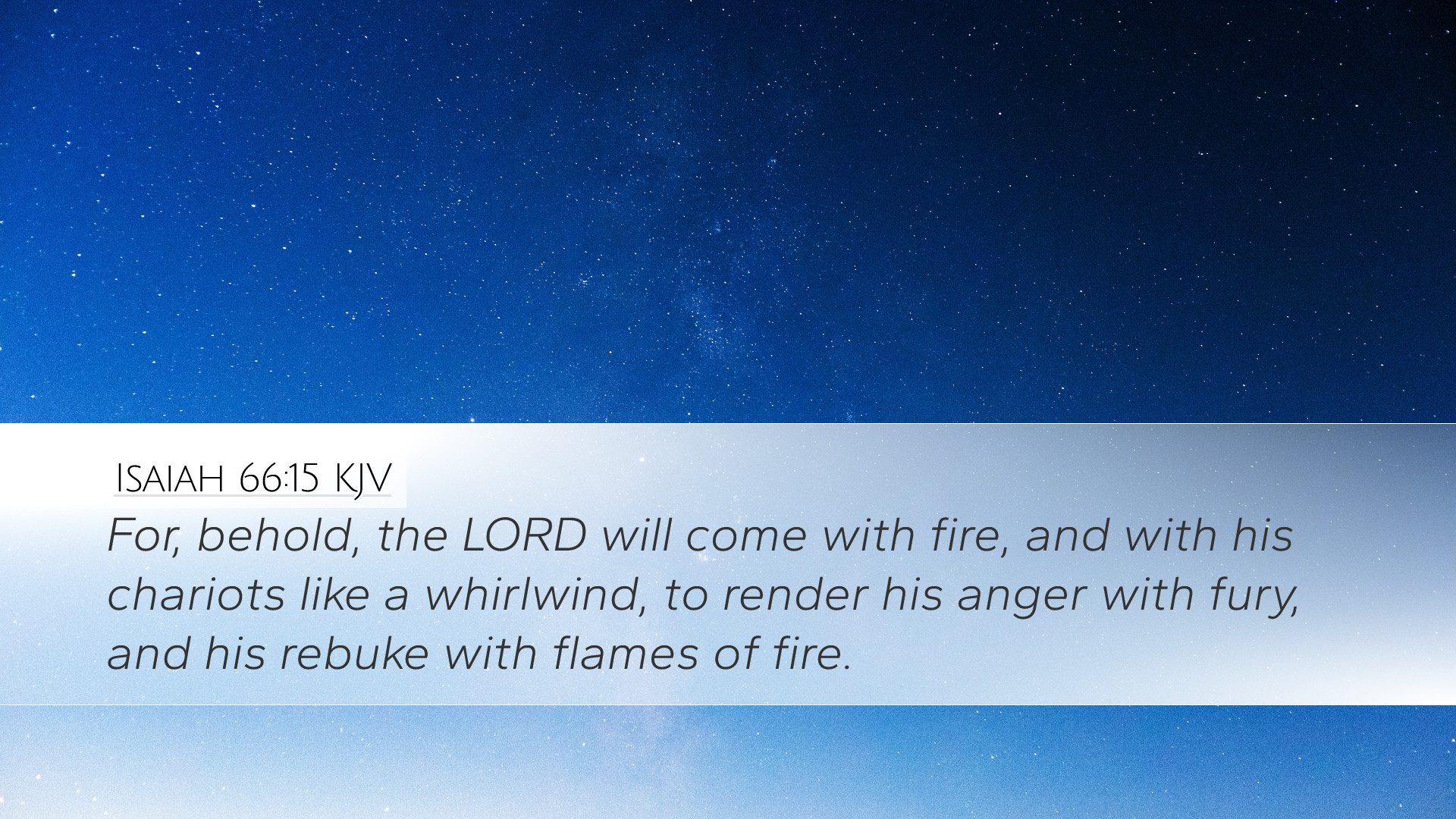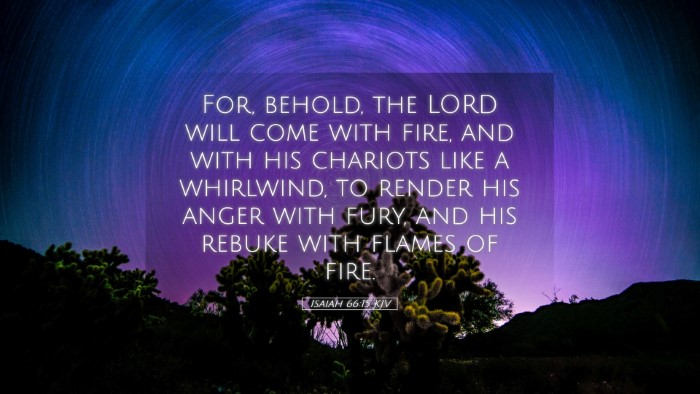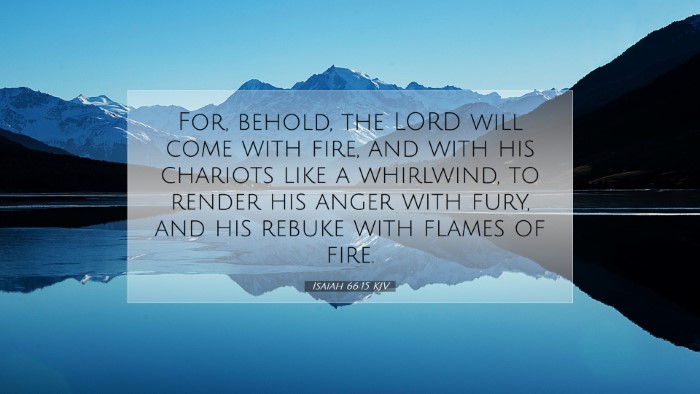Commentary on Isaiah 66:15
Isaiah 66:15 states: "For behold, the LORD will come with fire, and with his chariots like a whirlwind, to render his anger with fury, and his rebuke with flames of fire."
Contextual Overview
This verse concludes the Book of Isaiah, where God speaks of His impending judgment and the mysterious beauty of His deliverance. It encapsulates themes of divine retribution and the purification of His people, reflecting both His justice and mercy.
Theological Implications
The imagery presented by Isaiah speaks volumes about God's character—fiery, passionate, and sovereign. This serves to remind the reader of the duality of God’s nature: He is both a redeemer and a judge.
Commentary Insights
Matthew Henry
According to Matthew Henry, this verse emphasizes the Lord's might and severity in judgment. He interprets the "fire" as both a metaphor for purification and divine wrath. Henry explains that the "chariots like a whirlwind" symbolize God's swift and unstoppable justice.
Henry illustrates that this passage is intended to instill reverence for God, reminding us of His ultimate authority over creation. This leads to a clear understanding that God's anger is not arbitrary but is always in response to injustice and sin.
Albert Barnes
Albert Barnes elaborates on the imagery of fire, noting its dual role in Scripture as a purifier and a destroyer. He highlights that the coming of the Lord with fire signifies His approval and disapproval, which are necessary aspects of God’s holiness. This coming judgment, Barnes argues, foreshadows the final judgment wherein God will separate the righteous from the wicked.
Barnes further discusses the significance of “his chariots like a whirlwind.” He posits that this illustrates God's readiness to act, reinforcing the idea that His intervention will be sudden and powerful, leading to a dramatic transformation among the nations.
Adam Clarke
Adam Clarke takes an eschatological view of this verse, seeing it as a prophecy regarding the second coming of Christ. He notes that the imagery foretells the ultimate establishment of God’s kingdom, where justice prevails and evil is vanquished. Clarke emphasizes that fire, often associated with judgment, also denotes the Holy Spirit's cleansing influence, symbolizing hope for believers amid divine wrath.
Furthermore, Clarke highlights that the rendering of God’s anger can be seen as a necessary action for renewal and restoration. The rebuke delivered in flames suggests a fiery exhortation to righteousness, designed to awaken consciences and draw the faithful back to God.
Reflection on Modern Application
For pastors and theologians today, the teaching embedded in Isaiah 66:15 offers a powerful reminder of God’s sovereignty and the necessity of repentance. It inspires a call to action for the church to pursue holiness and accountability, serving as a stark reminder that God's judgment is not only a biblical concept but a current reality to be acknowledged.
The text invites students and scholars to engage deeply with the implications of divine judgment and mercy, encouraging a reflective hermeneutical approach toward understanding the broader narrative of Scripture. The call for reverence towards God remains unchanged, reiterating the biblical truth that all stand before a holy God who demands justice and righteousness.
Concluding Thoughts
Ultimately, Isaiah 66:15 presents a majestic illustration of God's nature—merciful yet fierce, loving yet just. It serves as an exhortation to all readers to ponder the coming of the Lord with solemnity, prepare their hearts for His return, and live in such a way that demonstrates fidelity to His commandments. In a world fraught with uncertainty, this promise of God's overwhelming presence stands as a beacon of hope and challenge to all who seek to understand their Creator more profoundly.


